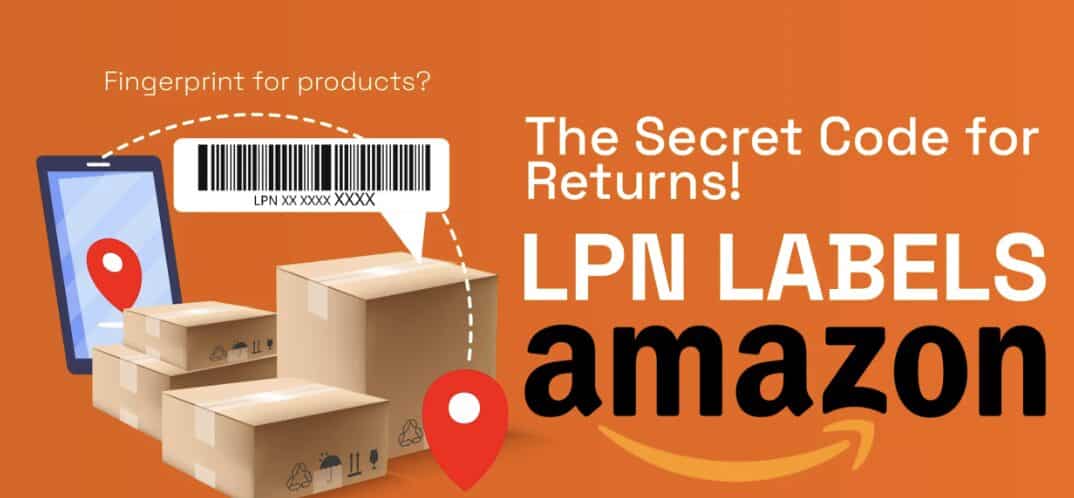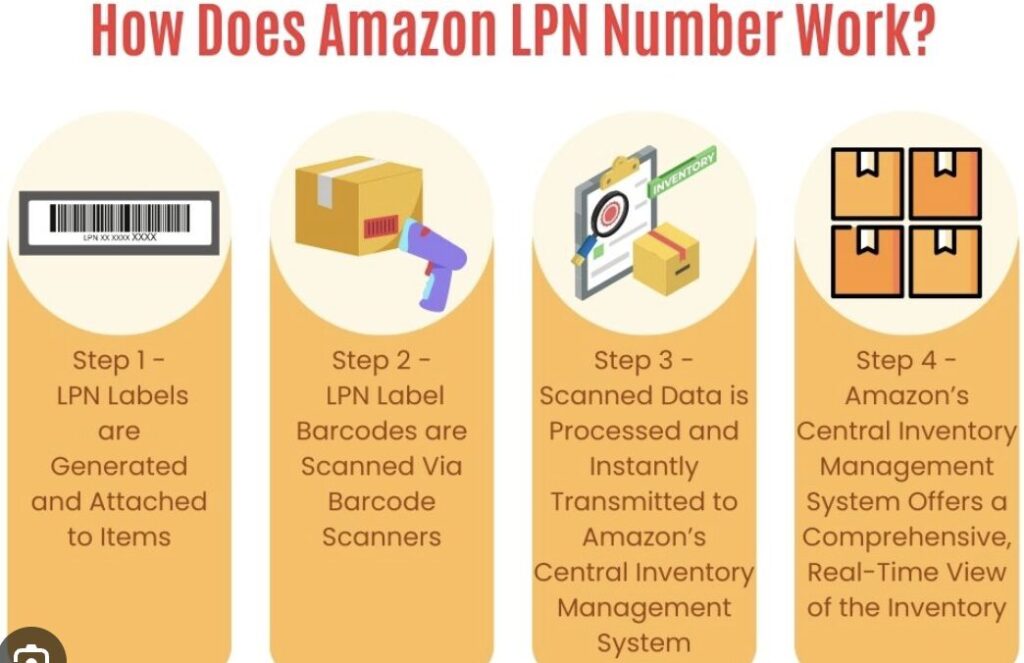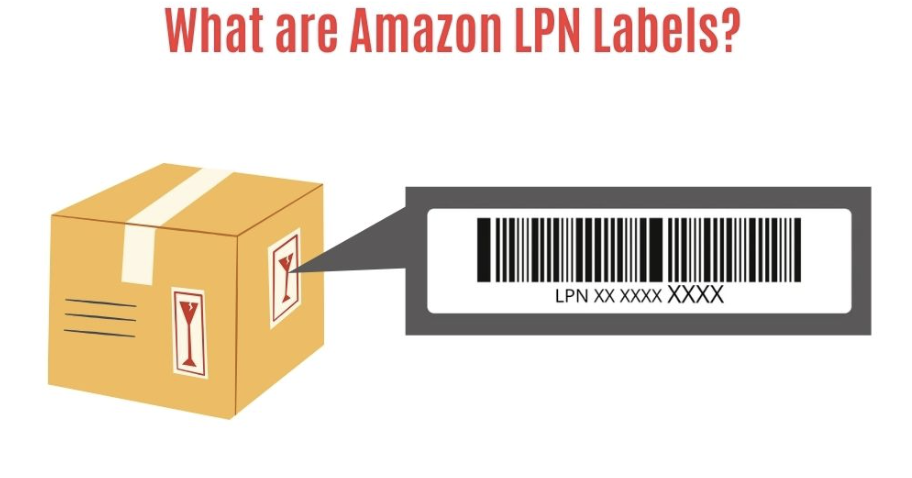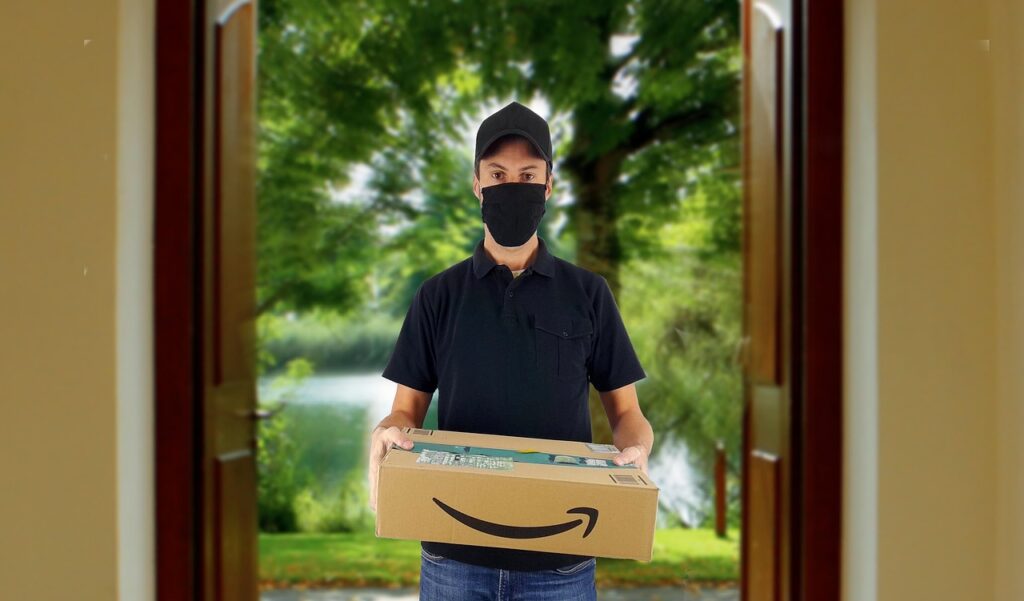Physical Address
304 North Cardinal St.
Dorchester Center, MA 02124
Physical Address
304 North Cardinal St.
Dorchester Center, MA 02124

Have you ever wondered if that Amazon package you received might actually be a returned item sold as new? LPN Code Amazon Products: What It Means . Many shoppers have noticed mysterious white stickers with “LPN” codes on their Amazon purchases and questioned what they mean. LPN stands for “License Plate Number,” and these codes typically indicate that an item has been returned by a previous customer.
While Amazon does not officially confirm that LPN labels mean an item was returned, both sellers and customers have observed a clear pattern. These unique tracking codes help Amazon manage inventory in their warehouses, particularly when processing returned merchandise. The LPN barcode serves as a fingerprint for products, allowing the company to track exactly where items go and what condition they are in.
Understanding LPN codes matters for both buyers and sellers on Amazon’s platform. Shoppers can use this knowledge to identify potentially returned items before making purchases, while sellers need to understand how these codes affect their inventory management. Learning to spot and interpret these labels can help you make more informed decisions when buying or selling on Amazon.
LPN codes serve as unique tracking identifiers that Amazon assigns to individual products, particularly during the return process. These codes help distinguish returned items from brand new inventory and play a crucial role in Amazon’s warehouse management system.

An LPN code stands for License Plate Number, which functions as a unique identifier for tracking individual items within Amazon’s fulfillment network. This code consists of a combination of letters and numbers that Amazon’s system generates automatically.
The LPN code acts like a digital fingerprint for each product. Amazon assigns these codes to items when they enter the warehouse system, especially during returns processing.
Unlike product identification numbers that remain the same across identical items, each LPN code is completely unique. No two items share the same LPN code, even if they are the exact same product from the same manufacturer.
Amazon uses LPN numbers primarily for returned items to track their movement through the fulfillment process. This system helps Amazon determine whether returned products can be resold as new or need different handling.
Amazon uses LPN labels to maintain accurate inventory tracking throughout their massive warehouse network. These labels prevent returned items from getting mixed up with brand new inventory during processing.

The primary purpose involves tracking returned merchandise through inspection and restocking procedures. LPN labels help Amazon employees identify exactly which item is being processed and its current condition.
LPN codes also assist sellers in managing their FBA inventory more effectively. When sellers receive return reports, they can use LPN numbers to identify specific returned items and make decisions about restocking or disposal.
Key purposes of LPN labels include:
Customers typically find LPN stickers on product packaging or directly on the items themselves. These stickers often appear on items that look like they were previously opened or have distressed packaging.
The LPN sticker usually appears as a small white or yellow label with black text. The label displays “LPN” followed by the unique alphanumeric code assigned to that specific item.
Amazon places these stickers in easily scannable locations on packages or products. Warehouse workers and automated systems need quick access to scan these codes during processing.

Sellers can also find LPN numbers in their Amazon Seller Central return reports. These reports provide detailed information about each returned item using its corresponding LPN code for tracking purposes.
Standard product barcodes contain information about the product type, manufacturer, and model that remains consistent across all identical items. LPN codes, however, are unique to each individual item and focus on tracking rather than product identification.
Traditional barcodes help identify what the product is, while LPN barcodes track where the product is and what condition it’s in. This difference makes LPN codes particularly valuable for managing returned inventory.
Key differences between LPN codes and standard barcodes:
| Feature | Standard Barcode | LPN Code |
|---|---|---|
| Uniqueness | Same for identical products | Unique for each item |
| Purpose | Product identification | Inventory tracking |
| Usage | Universal retail scanning | Amazon warehouse management |
| Information | Product details | Location and condition data |
LPN codes work alongside standard barcodes rather than replacing them. Both types of codes serve different functions in Amazon’s complex inventory management system.
LPN stickers serve as Amazon’s internal tracking system specifically designed to manage products that have been returned by customers. These labels create a clear distinction between new inventory and items that have already been in customer hands.
Amazon applies LPN stickers as unique identifiers for returned items to prevent confusion with new inventory. The system ensures returned products don’t accidentally get mixed with fresh stock.
Each LPN number connects to a specific return transaction. This allows Amazon to track which customer returned the item and why they sent it back.
The stickers appear as white rectangular labels with rounded corners. They contain a barcode followed by “LPN RR” and a series of numbers that make each label unique.
Amazon places these stickers directly on product boxes, often covering existing barcodes. This placement ensures warehouse workers can quickly identify returned items during sorting and processing.
When customers return items to Amazon, the company must separate these products from new inventory. LPN stickers prevent returned items from getting lost in the logistics process and being mistaken for brand new products.
The labeling happens at Amazon’s fulfillment centers after they receive returned items. Workers inspect the products and apply LPN stickers before deciding what to do with them next.
Amazon’s system tracks several key details for each LPN:
This data helps Amazon determine whether items can be resold, need refurbishment, or should be sent back to sellers.
Items with LPN stickers have been in customer possession before. This means they may show signs of use, damage, or missing components even if they appear new.
Customers who returned these items might have done so for various reasons. Common return causes include defects, missing parts, or simply changing their minds about the purchase.
Amazon sellers often cannot resell items with LPN stickers as new products because the labels indicate previous customer handling. This affects the product’s marketability and value.
The presence of an LPN sticker doesn’t guarantee the item is damaged. However, it confirms the product has left Amazon’s warehouse at least once before.
New Amazon inventory arrives directly from manufacturers or sellers without any customer interaction. These items typically have standard product barcodes but no LPN stickers.
Returned inventory follows a different path through Amazon’s system. After customers send items back, Amazon must evaluate, label, and decide how to handle each returned product.
New inventory characteristics:
Returned inventory characteristics:
Amazon sometimes resells returned items through regular listings, outlet stores, or bulk pallets. The LPN system helps track these products throughout their journey in Amazon’s ecosystem.
LPN codes create specific challenges for both buyers and sellers when items carry these labels. The codes directly impact how returned products can be resold, affect refund processes, and influence individual seller policies across the platform.
Amazon places LPN labels over the UPC codes to prevent sellers from listing returned items as new products. This creates immediate barriers for resellers who purchase these items.
Sellers cannot scan the original barcode when LPN stickers cover the UPC. They must remove the LPN label or create new product listings. Many sellers avoid LPN-labeled items entirely due to these complications.
Key reselling challenges include:
The LPN tracking system allows Amazon to monitor where returned items end up. Sellers who attempt to relist LPN items as new face account suspension risks.
Buyers who purchase LPN-labeled products often face different refund policies than those buying new items. Amazon treats these transactions differently because the items already went through one return cycle.
Return reasons are tracked through the LPN system. This means buyers can sometimes research why previous customers returned specific items. However, access to this information varies by seller and platform policies.
Refund considerations for LPN items:
Some sellers refuse returns on LPN-labeled products entirely. Buyers must check individual seller policies before purchasing these items.
Individual sellers develop different approaches to handling LPN-labeled inventory. Some sellers specialize in these returned items while others avoid them completely.
Common seller strategies include:
Many sellers use LPN codes to improve product quality by analyzing return patterns. They can identify common defects and avoid problematic inventory.
Professional sellers often create separate storefronts for LPN items. This allows them to set different policies and customer expectations for returned merchandise.
Sellers must disclose the returned status of LPN items in most cases. Failure to do so can result in negative feedback and policy violations.
Shoppers can spot LPN codes by looking for specific barcode stickers on product packaging, and knowing what steps to take when receiving these items helps protect consumer rights. Quick identification and proper response can prevent receiving used items when paying for new products.
LPN codes appear as barcode stickers with “LPN” followed by numbers like “LPNXXXXXXXXX” format. These stickers get placed directly on the original product packaging or box.
Common LPN placement locations:
The LPN label looks different from regular Amazon ASIN stickers. It has a unique barcode format that warehouse workers use for tracking.
Some LPN labels can be bypassed during warehouse processing if workers label returned items as new inventory. This means shoppers might receive previously returned products without visible LPN stickers.
Customers should check all packaging surfaces when items arrive. LPN stickers may be small and placed in less obvious spots on boxes or wrapping.
Customers who find LPN labels on products they ordered as “new” should contact Amazon customer service immediately. LPN-labeled items are generally returned products that may have been used or damaged.
Immediate actions to take:
Amazon’s policy requires new items to be actually new. Receiving returned merchandise when paying full price for new products violates this policy.
Some customers report receiving LPN-labeled items that appear unused but still technically qualify as returns. Even if the item looks perfect, the LPN designation means it was previously sold and returned.
Customer service representatives can verify whether the item should have been sold as new or marked as a warehouse deal at a lower price.
Customers should start return requests through Amazon’s online return center or mobile app. Select “Item not as described” or “Received wrong item” as the return reason when the product has an LPN label but was sold as new.
Return process steps:
Amazon typically provides prepaid return shipping labels for these situations. Customers can drop packages at UPS locations or schedule pickups.
For expensive items, customers may request expedited replacements before returning the LPN-labeled product. This prevents delays in receiving the correct new item.
Chat support or phone customer service can resolve issues faster than email. Representatives can issue immediate refunds or send replacement items while processing returns.
Document all communication with Amazon about LPN-labeled products. This creates a record if similar problems happen with future orders.
Sellers must understand that LPN-labeled products cannot be sold as new items and require specific handling procedures. Proper processing, inventory management decisions, and Amazon policy compliance are essential for maintaining seller account health.
Sellers should inspect LPN-labeled items immediately upon receipt to determine their actual condition. Many returned products arrive in excellent condition despite having the LPN sticker applied during Amazon’s return process.
Physical Inspection Checklist:
Items in perfect condition can still carry value in secondary markets. Sellers must remove or cover LPN stickers before any resale attempts. The sticker placement often determines if the product packaging remains marketable.
Damaged items should be separated immediately. Sellers can use these for parts, bundle deals, or disposal depending on the damage extent.
Sellers have several paths for LPN inventory management. Each option depends on product condition, market demand, and business model preferences.
Liquidation channels offer quick inventory clearance. Wholesale buyers often purchase LPN inventory in bulk at discounted rates. This option provides fast cash flow but lower profit margins.
Refurbishment programs work well for electronics and appliances. Sellers can repair, clean, and repackage items for resale through other platforms like eBay or Facebook Marketplace.
Amazon Warehouse deals allow sellers to list items as used or open-box products. This keeps inventory within Amazon’s ecosystem while clearly marking condition status.
Donation and disposal becomes necessary for severely damaged items. Sellers can claim tax deductions for charitable donations while clearing warehouse space.
Amazon prohibits selling returned items as new products. Sellers who violate this policy face account suspension or permanent bans from the platform.
Policy Requirements:
Regular return report analysis helps sellers identify patterns in returned products. High return rates on specific items may indicate listing problems or product quality issues.
Sellers must keep detailed records of LPN inventory processing. Amazon may request documentation during account reviews or reimbursement claims. Proper documentation protects seller accounts and supports potential claims for fulfillment center errors.
Communication with Amazon support requires specific LPN numbers when filing claims. Sellers should maintain spreadsheets linking LPN codes to original orders and return reasons for efficient claim processing.